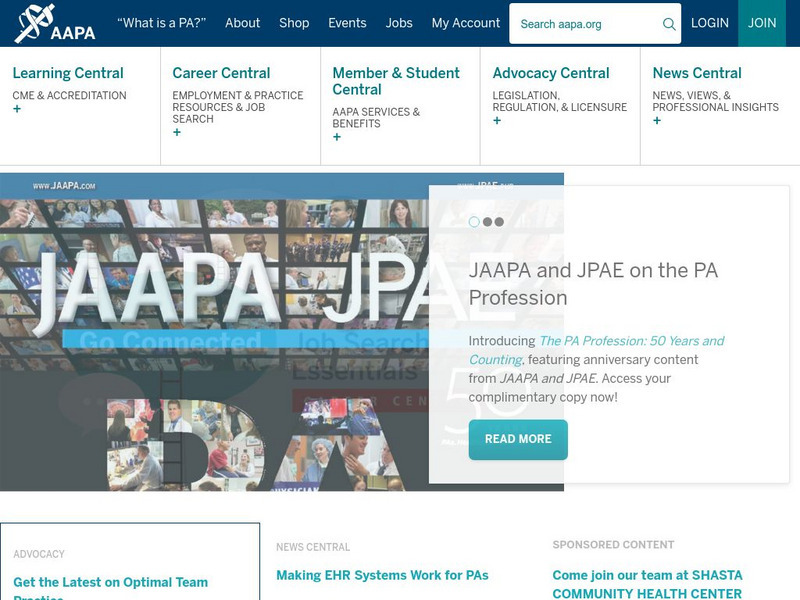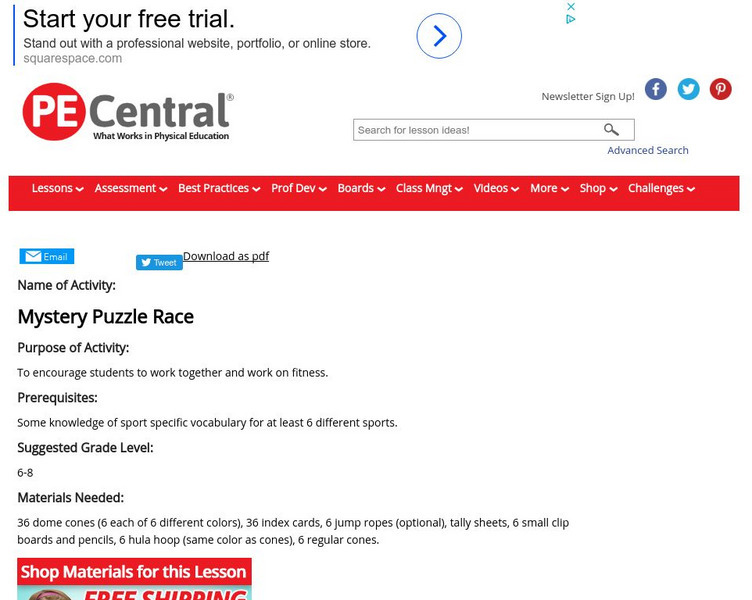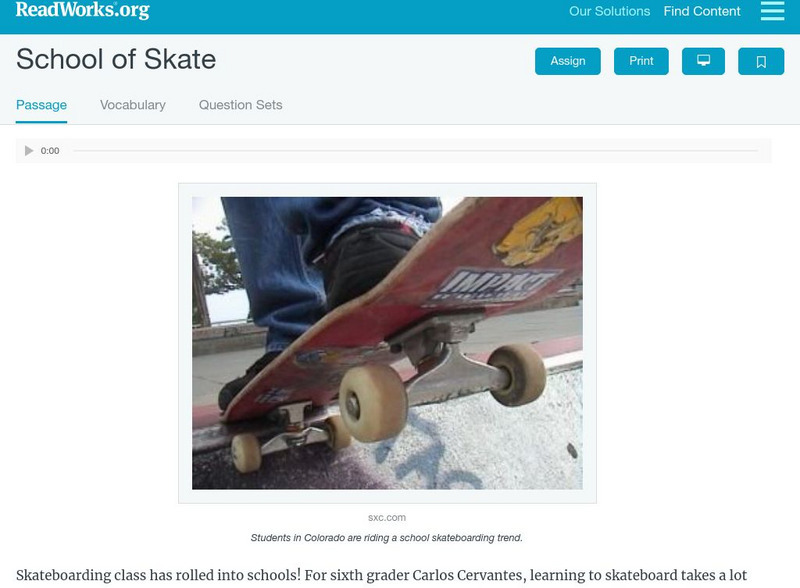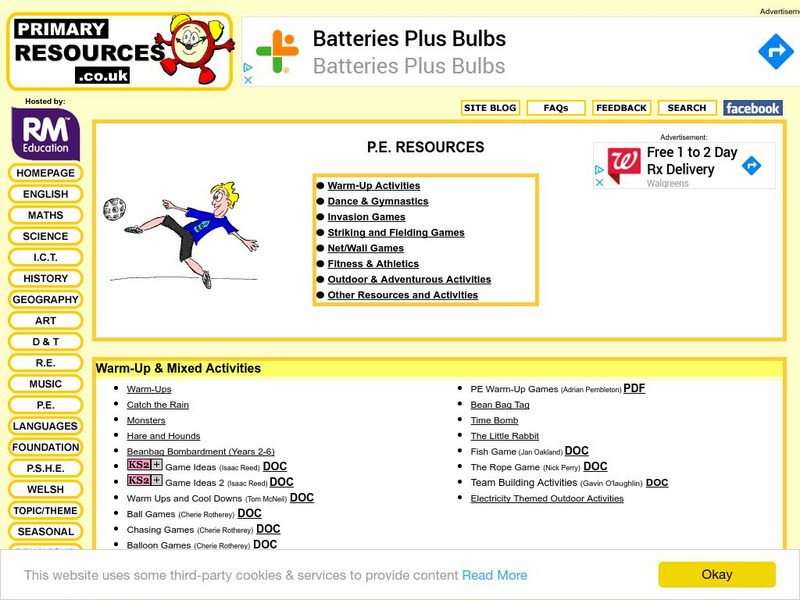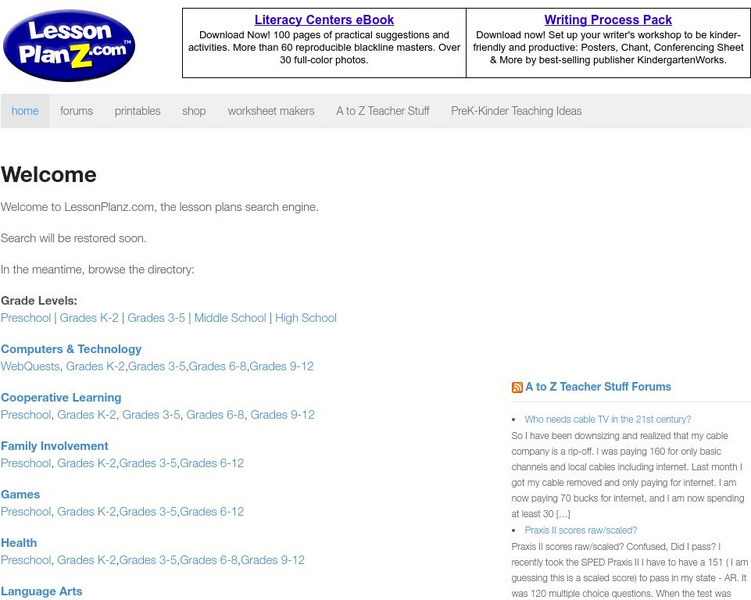Children's Museum
The Children's Museum of Indianapolis: Sports Science and Wellness
This unit of study contains three lessons, each with three experiences that may be taught together or individually. Each lesson will connect to science and/or math standards, along with a health standard or sports connection.
Other
American Academy of Physician Assistants
The home page of the premier professional organization of Physician Assistants. Site includes a bookstore, a search engine to research current health and healthcare issues, and biographical information on the top PA's in the country.
CPALMS
Cpalms: Browse and Search Resources
This site shares a collection of expert and peer-vetted teacher resources that are searchable for teachers and students. Searching can be achieved via a subject, grade, audience, and/or type. Curricula standards for the following subjets...
US Department of Agriculture
Choose My Plate: Health and Nutrition Information for Educators
Find sets of lesson plans for children grades one through six about the healthy food choices. Includes posters, worksheets, and coloring pages.
Utah Education Network
Uen: Busy Bodies
Students will engage in different activities to help them learn about physical skills. Students will play Busy Body Bingo, Movement Bingo, Silly Stretching, On the Move, Hullabaloo, Little Sliders, and Frog Pond. Students will keep a...
Other
Aahperd Archive Collection
Learn about the American Alliance for Health, Physical Education, Recreation and Dance archives located at Springfield College in Springfield, MA.
PE Central
Pe Central: Mystery Puzzle Race
Young scholars work in teams to complete physical tasks and, in the process, solve a sports- or health-related puzzle. Modify this activity to make it more challenging or to meet the needs of students with disabilities.
Other
Jumping Into the Curriculum: Gr 4 6 Cross Curricular Activities [Pdf]
Document presents jumping activities that teachers can incorporate into the classroom. Requires Adobe Reader. [PDF]
Other
Jiskha Homework Help: Jiskha Homework Help!
Click on either of the main headings,school subjects or grade levels, to locate the areas where you are need further instruction. Chat with live tutors or visit the active discussion forums.
PBS
Pbs Learning Media: Wheel of Fitness Lesson Plan
This lesson is very similar to the popular television show Wheel of Fortune. Students are chosen to spin the Wheel of Fitness and whatever they land on is the exercise they perform.
Read Works
Read Works: School of Skate
[Free Registration/Login Required] An informational text about after school skateboarding classes being offered at some schools. A question sheet is available to help students build skills in reading comprehension.
Encyclopedia Britannica
Encyclopedia Britannica: 300 Women Who Changed History: Elizabeth Blackwell
Encyclopaedia Britannica provides a biography of Elizabeth Blackwell (1821-1910 CE), the first woman doctor in the United States.
Other
American Fitness Professionals
This site explains how to become a certified personal trainer or fitness instructor. It includes an index of health articles and a listing of seminars and home study courses related to health and physical fitness.
ClassFlow
Class Flow: Friendship
[Free Registration/Login Required] Kindergarten - Character Education Integration
Centers for Disease Control and Prevention
Centers for Disease Control: Science Ambassador Fellowship: Lesson Plans
This site gives many lesson plans for teaching middle and high school students about current and relevant science topics like autism, ADHD, Diabetes, Fetal Alcohol Syndrome, birth defects, genetics, and more. The lessons are based on...
Primary Resources
Primary Resources: Pe
Primary Resources provide pdf and html documents for lessons that include: warm-up activities, dance & gymnastics, invasion games, striking & fielding games, net/wall games, fitness & athletics, outdoor & adventurous...
Other
Lesson Plan z.com: Lesson Plans
LessonPlanZ.com is an online resource for teachers to find lesson plans and other teaching resources.
Utah Education Network
Uen: Utah Act. 03: Just a Minute
Using the tradebook Just a Minute by Teddy Slater, 2nd graders will learn about what is needed for a healthy body. Students will draw and illustrate a book that will teach other about short activities that will support a healthy body.



